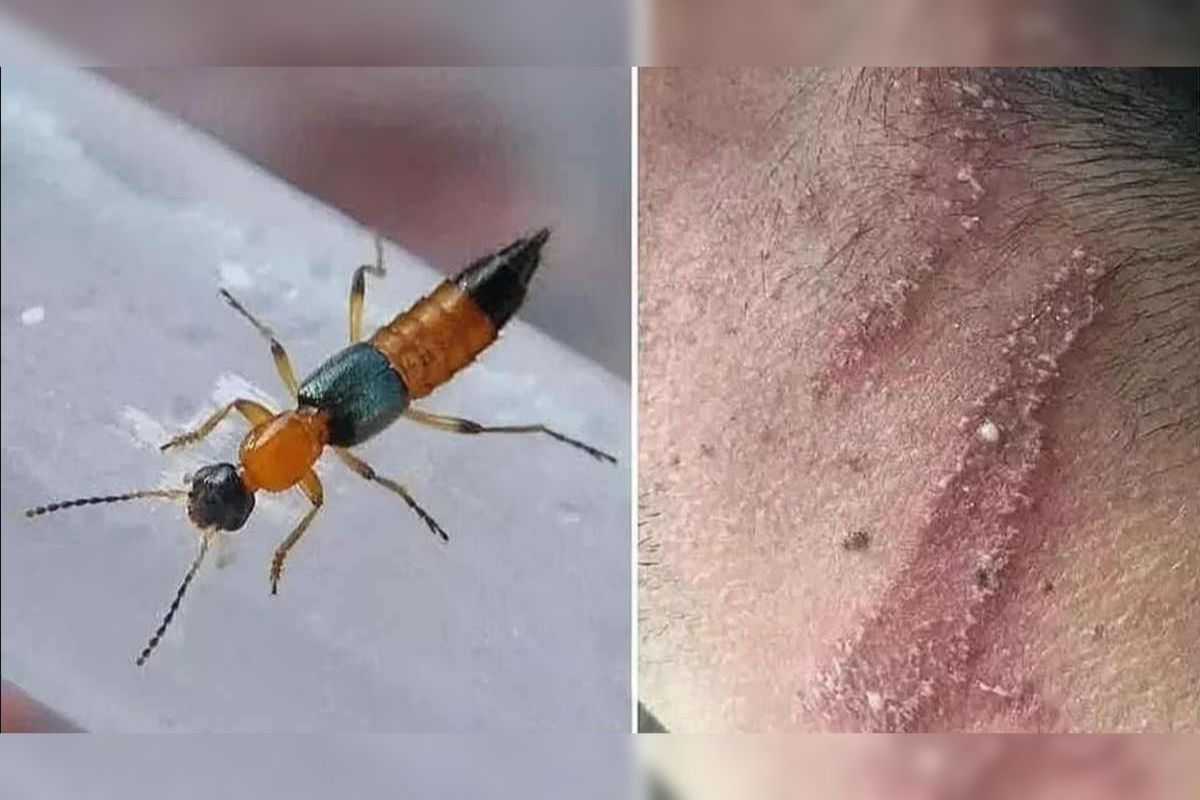The ‘Nairobi fly’ is the friend of the crop, but farmers should be careful
Protection of human skin by 'Pederin', a secretion of Nairobi flies.
The insect colloquially called ‘Nairobi fly’ is actually a beetle. These insects play the role of a friend of the crop and the farmer as they are the hunters of the harmful insects that harm the crop i.e. natural insecticides. That is why their number also decreases with the use of chemical pesticides. Then ‘Nairobi flies’ move from farms to nearby settlements in search of their food. During this process, the risk of ‘Nairobi flies’ coming in contact with humans increases.
Humans need protection from the ‘Nairobi fly’
According to entomologists, the ‘Nairobi fly’ neither bites nor stings humans, but wherever it sits on the body, it secretes a substance called ‘Pederin’. Due to this, apart from itching and burning in the body, there is a wound. That is why it is also called the ‘dragon bug.’ The most important instruction regarding the ‘Nairobi fly’ is that if it sits on its body, it should be blown away without touching it, and if the body is scratched, then it should be strictly avoided to touch the eyes with that hand.
Actually, sometimes toxic ‘Pederin’ comes in contact with the eyes. This causes a wound on the mucous membrane of the eye. In common parlance, it is called ‘aankh aana’. Sometimes its cause also appears in the form of temporary blindness. In some people, the wound caused by ‘Pederine’ in the eyes becomes so deep that the doctor needs to perform surgery. ‘Pederin’ is an acidic secretion and it is produced by symbiotic bacteria found in the body of ‘Nairobi fly’.

Side effects of ‘Pederin’
Due to ‘Pederin’, abnormal burning and swelling occurs on the human skin. This causes itching and wounds on the skin. The severity of its symptoms depends on the quantity of ‘Pederin’ and the duration of contact with the ‘Nairobi fly’. In less severe cases, mild redness is seen on the skin. In cases of moderate severity, symptoms of itching begin after about 24 hours and blisters develop in about 48 hours.
The blisters usually dry up in a few days and leave no scar on the skin. But when ‘Pederin’ has spread widely in the body, then the matter becomes more serious. In such a condition, symptoms of fever, nerve and joint pain or vomiting etc. appear. Then it becomes necessary to go to the hospital for its treatment. If the outbreak of ‘Pederin’ on the eyes becomes excessive, then there is a danger of loss of eyesight.
Measures to prevent the outbreak of ‘Pederin’
- Flies should be blown away without touching them.
- Where the ‘Nairobi fly’ is sitting on the skin, it should be washed thoroughly with soap and water as soon as possible.
- Mosquito net should be used while sleeping.
- Wear clothes that cover as much of the body as possible.
- Wear glasses and avoid touching eyes.
- Avoid light at night. However, accumulating ‘Nairobi flies’ through a light source can destroy them with insecticides.
- Insecticides such as imidacloprid, fipronil and deltamethrin can be sprayed at the breeding sites of the Nairobi fly.
- If the rashes on the body seem serious, consult a doctor.

Identification of the ‘Nairobi fly’
The length of ‘Nairobi fly’ is about one centimeter. Its head, back of abdomen and elytra are black in color and neck and abdomen are orange in colour. It is easily found in moist places like paddy fields. The female ‘Nairobi fly’ lays eggs one by one in moist places. After heavy rains there is a rapid increase in the number of ‘Nairobi fly’ and its outbreak increases. The Nairobi fly is attracted to light at night.
Biological Introduction of ‘Nairobi fly’
The original place of ‘Nairobi fly’ is considered to be the African country of Kenya. Hence, it got the name of ‘Kenya fly’ or ‘Nairobi fly’ after the name of Nairobi, the capital city of Kenya. Prior to naming, its severe outbreak was seen in Kenya. But now the presence of ‘Nairobi fly’ is not limited to Kenya, rather this insect is now easily found in tropical and temperate regions of the world.
Paederus genus in entomology: Two species of Paederus, P. Eximius and P. Sabaeus (Species: P. Eximius and P. Sabaeus) are called ‘Nairobi fly’. These beetles belong to the Staphylinidae family of the Coleoptera order (Family: Staphylinidae), which are also called ‘rove beetles’. The Staphylinidae are identified mainly by the short elytra (front wings). These usually expose more than half of the insect’s abdominal segments.
Also Read: Know how sticky traps are the safest insecticide for crops?
Contact us – If farmers want to share any valuable information or experiences related to farming, they can connect with us via phone or WhatsApp at 9599273766 or you can write to us at “[email protected]”. Through Kisan of India, we will convey your message to the people, because we believe that if the farmers are advanced then the country is happy.
You can connect with Kisan of India on Facebook, Twitter, and WhatsApp and Subscribe to our YouTube channel.



